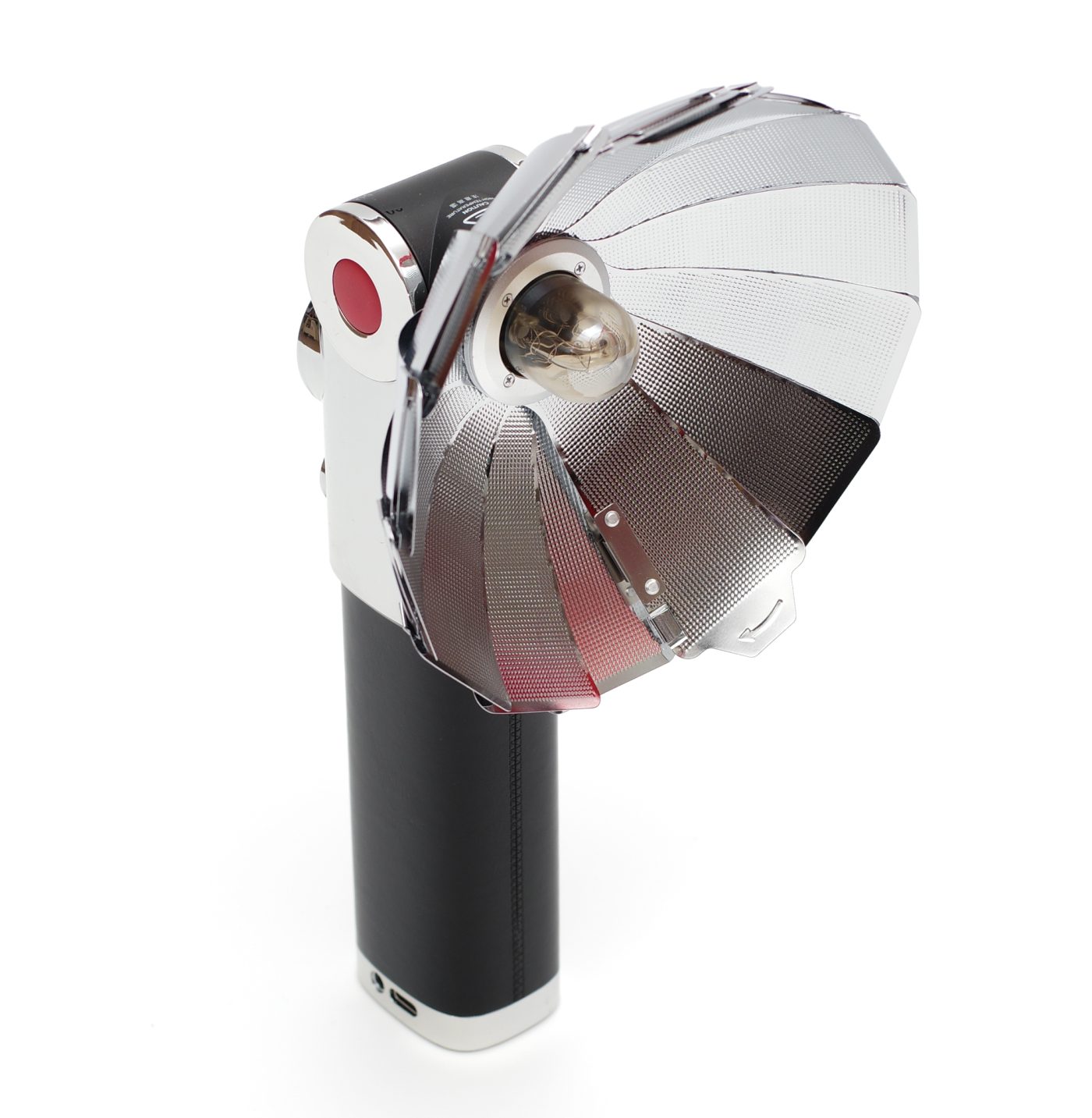Today we’re taking a look at Godox’s retro studio flash, the Lux Master.
Godox is not shy about experimenting with design and features and offers an increasingly complete line-up of products. Many of their most mainstream products, such as the AD200Pro II and the V1 Pro, are recent launches updating previous versions. Others, like their X3 miniature and touchscreen trigger, break the mold of what flash triggering can be.
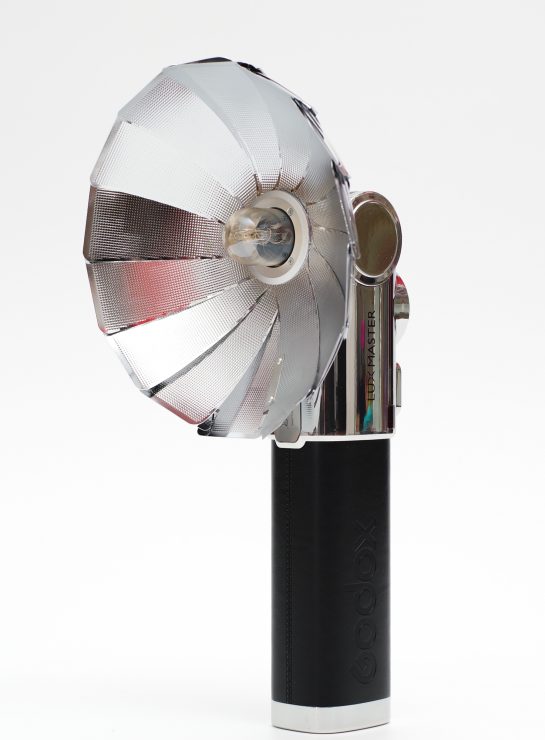
Alongside these more classical products, Godox also offers a few niche items. One such product is the Lux Master. Using a resolutely retro look, complete with a metallic folding fan reflector and faux-leather handle, the Lux Master nonetheless offers full TTL, wireless controls, a color touchscreen among other things. It is truly a modern flash with a retro appearance.
Physical Description
Beauty is in the eye of the beholder, but there’s little doubt that most users will enjoy the physical appearance of the Lux Master.
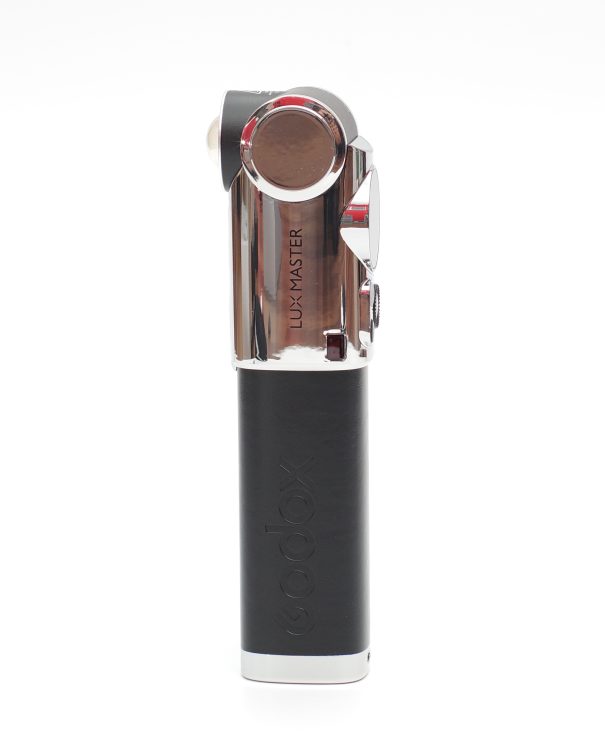
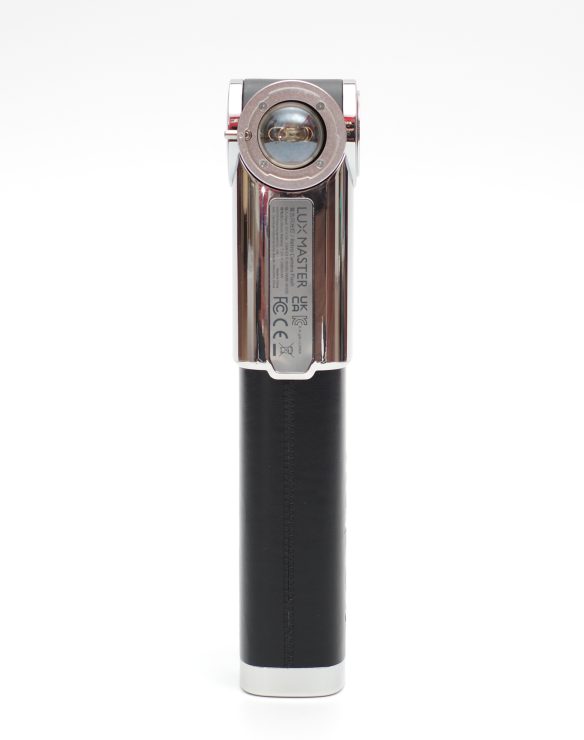
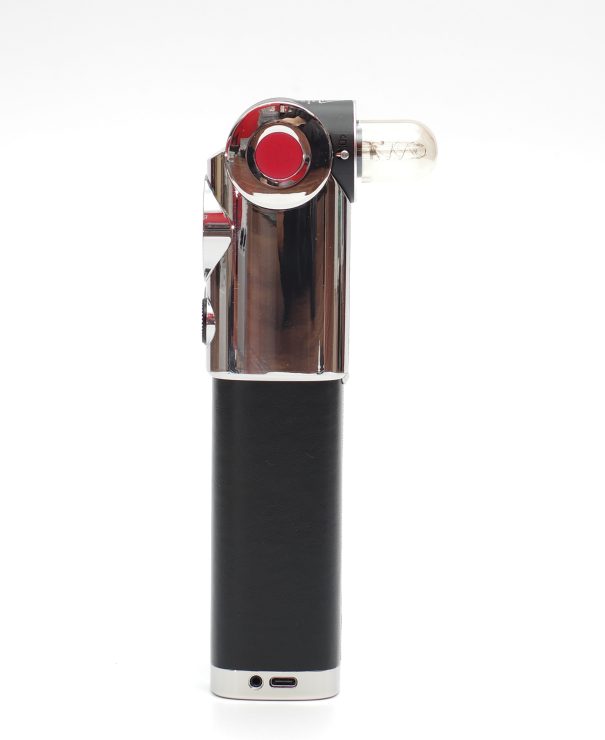
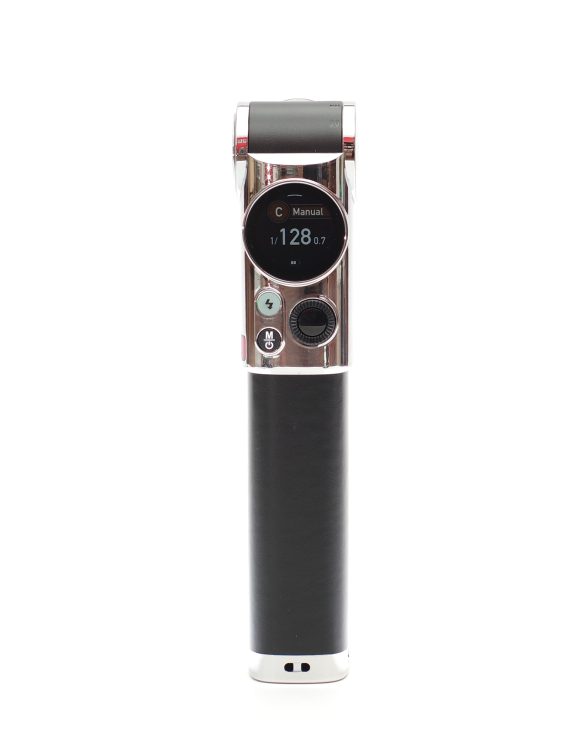
The flash looks like a thick wand. Some people likened it to a lightsaber handle, others to a neuralyzer from Men In Black. The lower section is made of black faux-leather and the top has a shiny chrome finish. The brand is engraved in the black section, and the flash name is printed nearer to the top.
The front is mostly devoid of features, apart of course from the bulb itself. That bulb is recessed by default and protected by a plastic cover. A small tab releases the cover via a bayonet movement. A large red button on the side makes the bulb pop out; the flash won’t fire with the bulb out. It can be pushed back in for transportation.
The “head” (such as it is) can be tilted from fully horizontal to fully vertical, with notches at intermediate positions. It does not swivel.
The rear is where all of the controls are located. In typical Godox fashion, the power button serves a dual purpose, here the Menu access. Also typical are the two steps to actually turn on the flash; after pressing the power button, the rotating knob to the right must be operated too, preventing accidental presses. The touchscreen immediately lights up and the flash after a few seconds.
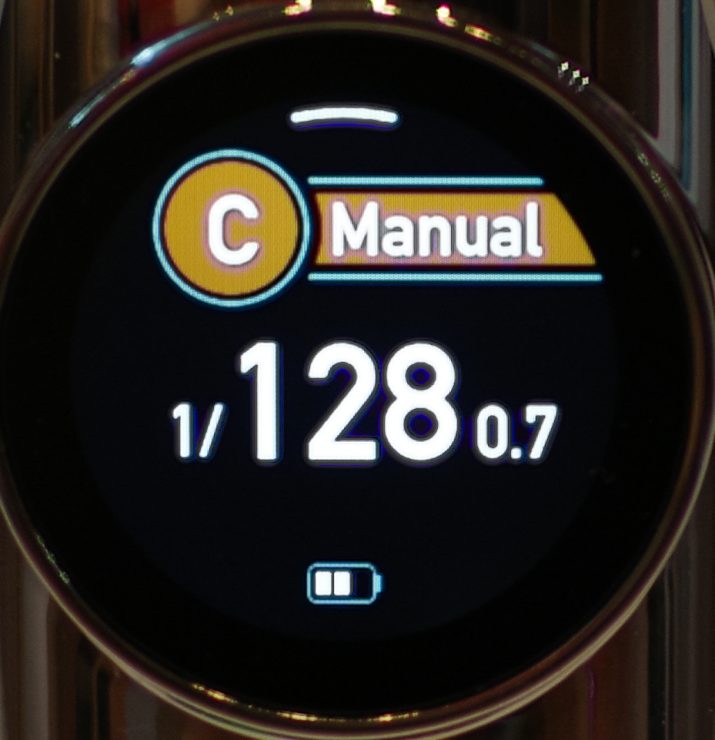
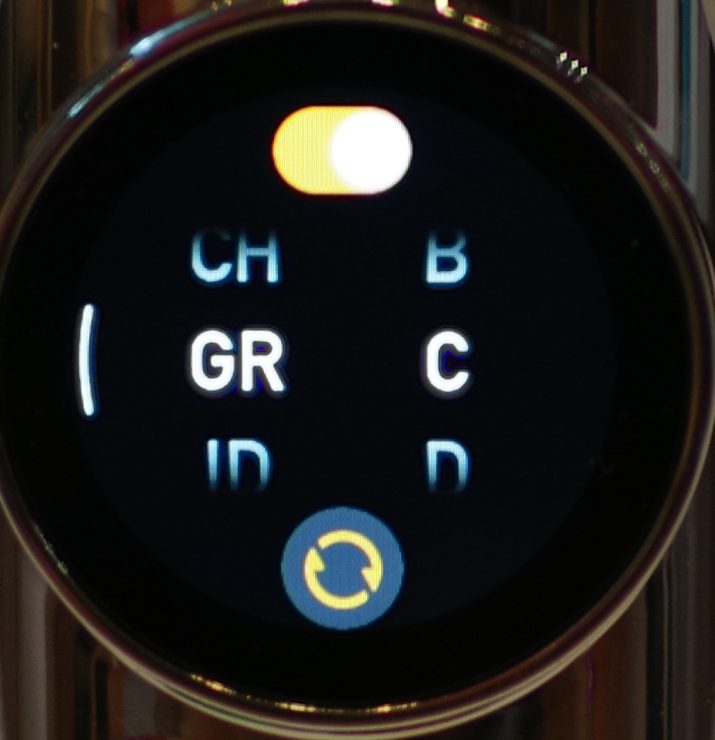
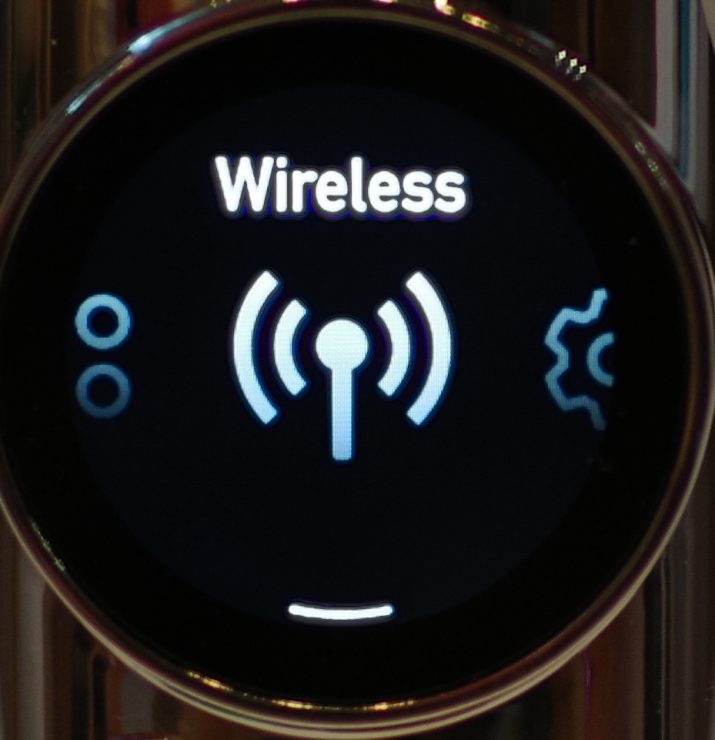
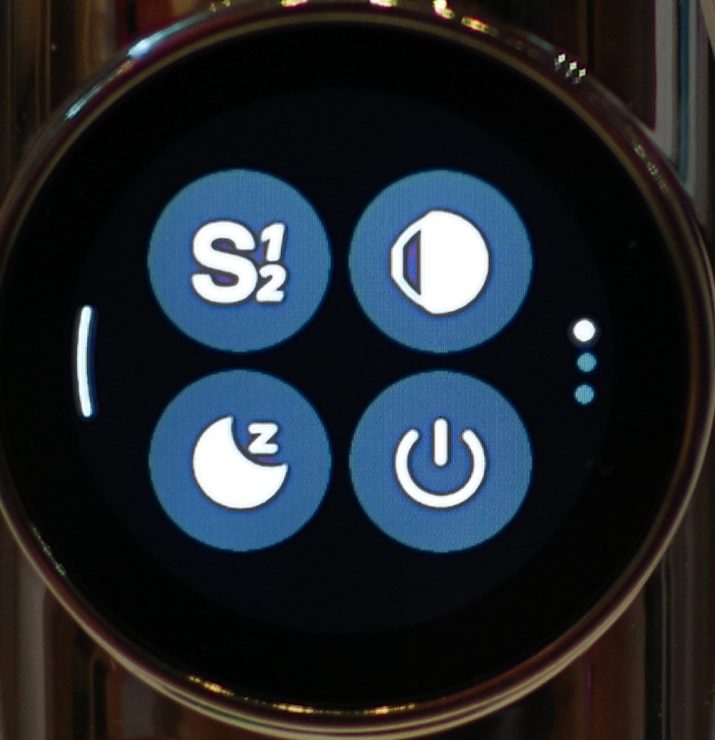
This display looks great and is a key part of the flash’s aesthetics. It is completely round, which adds to its appeal. It is also bright, sharp and responsive. The menu interface is logical. In particular, I like how Godox highlights gesture interactions (such as the “Back” movement) via a discrete bar on the edge from which to slide.
The menu structure is simple, as there are a limited number of parameters to adjust. Less reliance on icons and a bit more written content would help navigation but, frankly, the menu isn’t used all that often after initial configuration. Settings will most likely be changed via a remote trigger such as the XPro II or X3.
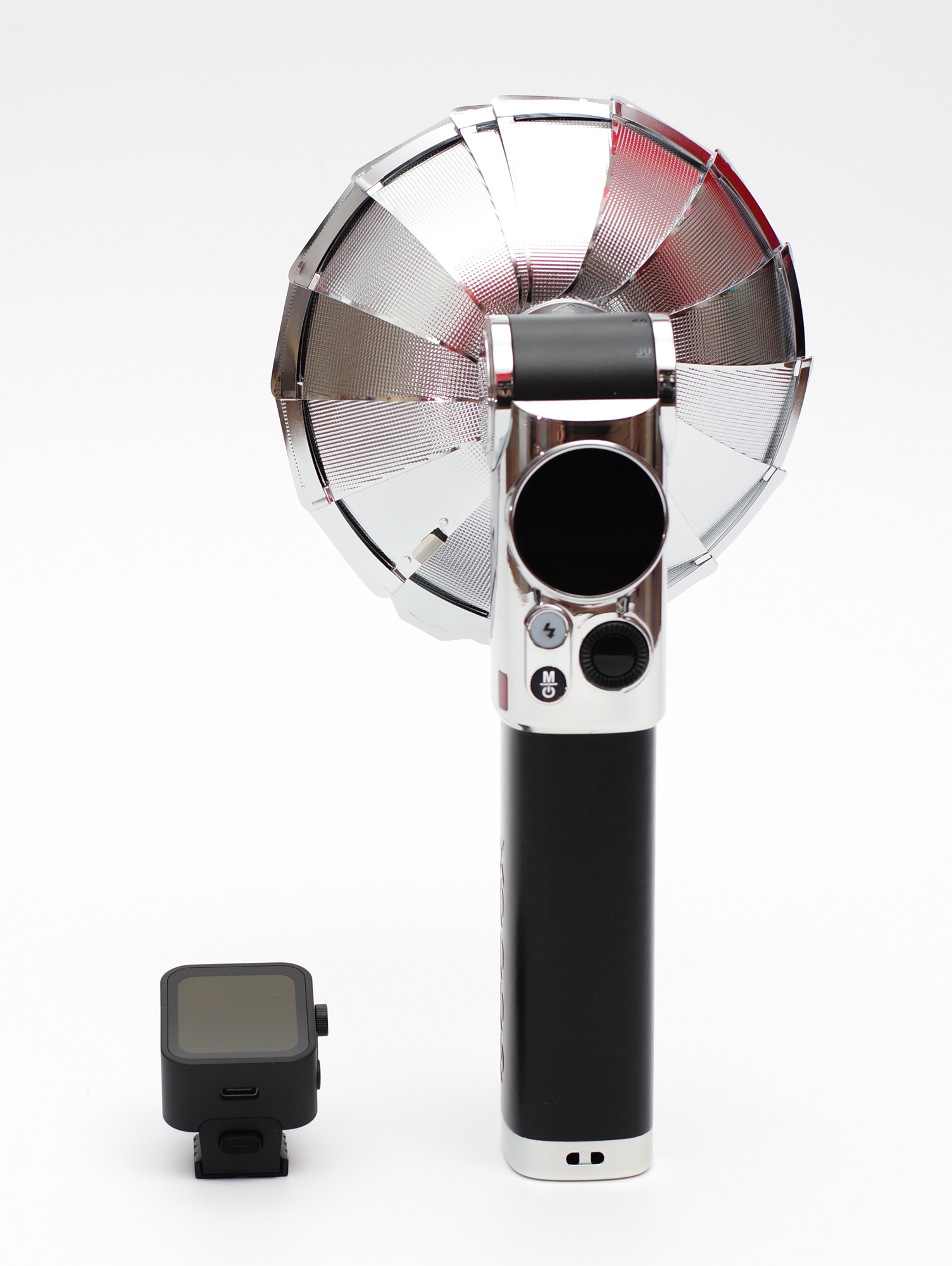
Speaking of which, synchronizing the flash with a trigger can easily be done by selecting the proper channel, ID and so forth. With the X3 trigger, things are even simpler. Simply pressing the “Sync” icon on both the trigger and the flash has them paired in less than two seconds. Again, this should only need to be performed once, but it’s a welcome feature that we first saw with the AD200Pro II.
Physical controls on the flash are simple. As mentioned, the Power/Menu button is at the bottom left. To the bottom right is the rotating dial surrounding a confirmation button. These can be used to adjust power or navigate menus without using the touchscreen. At top left is the test button. On the left edge is the photocell for optical triggering.
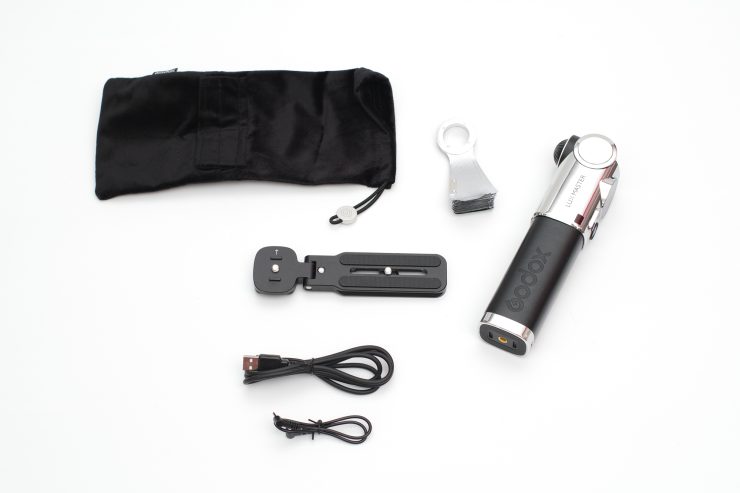
In addition to a soft pouch for protection, the Lux Master ships with a USB charging cable, a folding fan reflector and a mounting bracket.
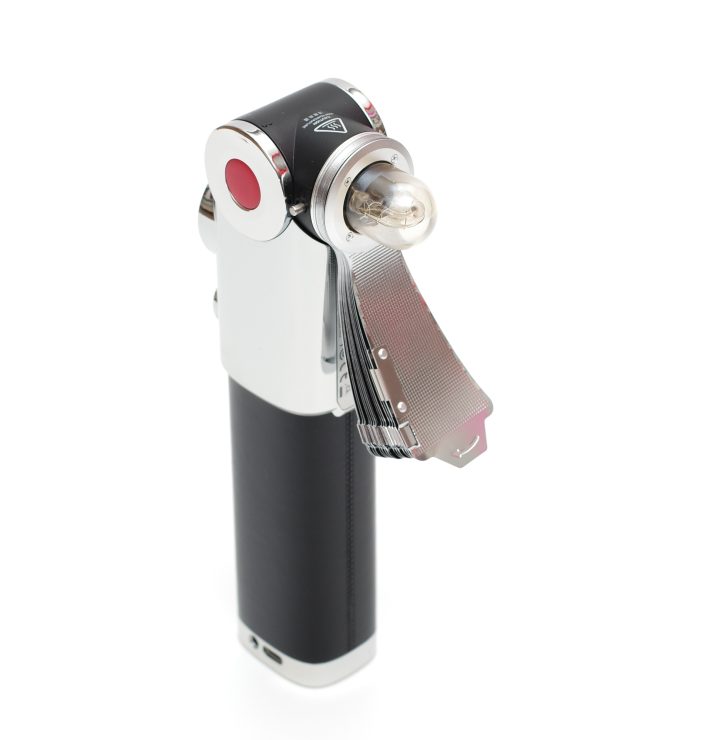
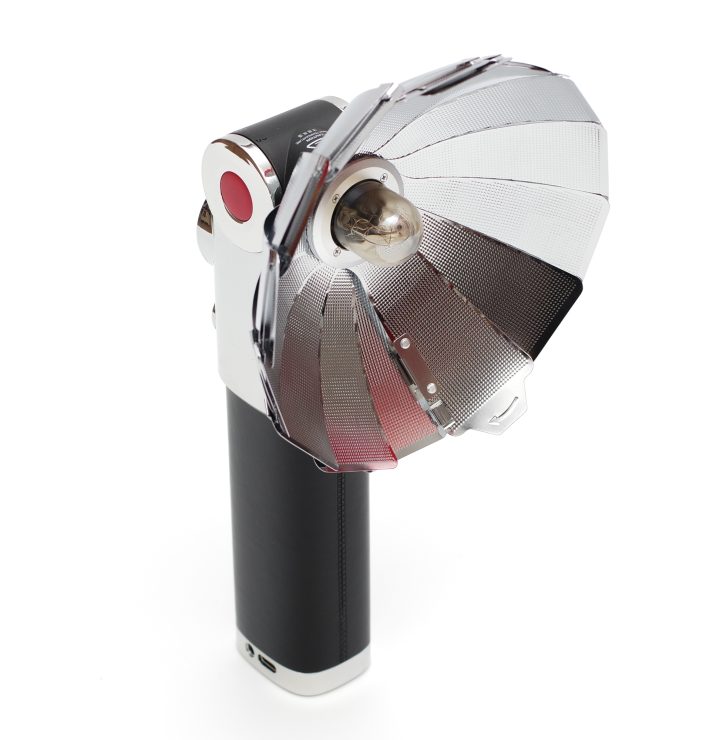
The reflector attaches via the front bayonet, like the protective cover. Once attached, it can be deployed easily, and the blades locked in place. Removal is just as simple. The reflector might appear flimsy but is sufficiently robust.
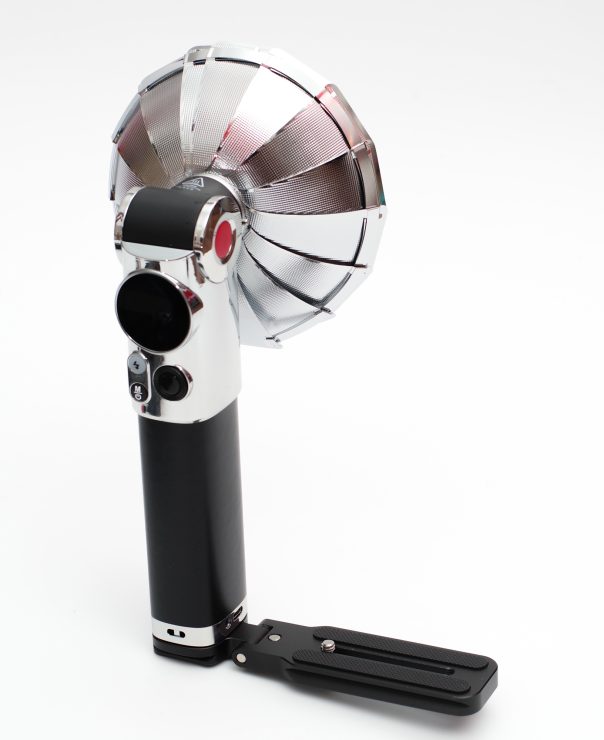
The mounting bracket is interesting. Since the flash cannot mount on a hotshoe, this bracket (which has two 1/4-20 mounting screws) allows the flash and a camera to be coupled together. This gives an “old-fashioned photographer” vibe and works particularly well with cameras with a subtle vintage look. The bracket functions as an Arca-Swiss tripod plate, as it has the necessary lips.
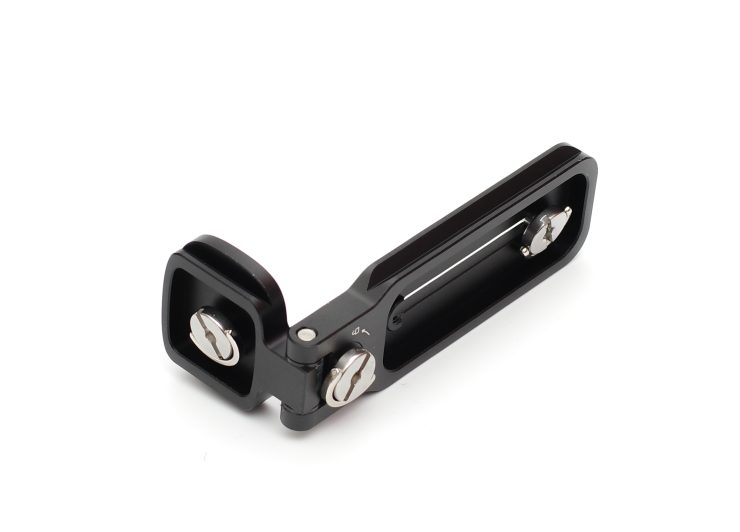
It is also split close to where the flash would normally mount. The bracket can be bent to serve as a poor man’s L-bracket in a pinch.
Performances And Specs
The Lux Master packs reasonable power, with a Guide Number of 25 meters at ISO 100. Measuring power in GN is a hint that this flash isn’t in the same league (power-wise) as more dedicated studio strobes such as the AD200Pro II, which typically measure their power in Watts. It can deliver up to 460 pops at full power, with a recycle time of 1.8 seconds, again at full power. Recycle time and max power are not class-leading by any means, but part of this lower GN is due to the fact that the flash is actually a barebulb, which sends light in all directions, instead of a directional (and zooming) Fresnel head. 28mm is the same as the Guide Number for the V1, which measures its value for a 50mm lens. The V1 recycles at 1.5 seconds, almost the same as the Lux Master.
The flash can operate in wireless TTL mode, as well as full manual, optical slave (with or without pre-flash), as well as in the old-fashioned Auto Mode (with selectable exposure parameters). It can be triggered via a traditional sync cord, particularly useful in Auto Mode. First- and second-curtain, as well as HSS, are supported.
The Lux Master only supports 5 groups (A through E) with Godo’s X-sync protocol. Many other Godox strobes support 16 groups.
The built-in battery fully recharges in about two hours.
In Use
The Godox Lux Master is different from an average flash in shape, but also in use.
Its shape does not lend itself naturally for studio work. Sure, it can be used in a softbox by using a clamp such as Godox’s S2. It also as a standard thread at the bottom to mount on a tripod or light-stand. However, being taller than most speedlights, it won’t pair nicely with most setups, particularly umbrellas.
The Lux Master excels when used handheld or with its bracket. Using it handheld allows the photographer to direct its output in any direction with ease, and the handle’s shape makes it easy and natural to manipulate. When mounted alongside a camera via the bracket, the flash doubles as a nice holding point for the whole setup.
Mounting the camera and flash on the included bracket, deploying the fan reflector, attaching the trigger to the camera all takes some time. Because of this, the Lux Master is not truly a run-and-gun type of flash; it’s certainly not as quick as using a hotshoe. Of course, once everything is set up, there is no practical speed difference between the Lux Master or another speedlight.



One area where there is a difference, however, concerns illumination. When used as a barebulb (without the reflector), the Lux Master lacks the power to fully light up a room of medium size. ISO will have to increase more than, say, with an AD200Pro II. Using the fan reflector and directly illuminating the subject (without bounce) will yield good illumination, but with a harsher edge to the shadows when compared with a regular speedlight. This delivers a truly vintage look, like a picture seen in a newspaper many decades ago.
Bouncing the light with the reflector delivers the most predictable results, with good spread thanks to the barebulb, but a nice overhead spill. Looking at the images above (with the Lux Master at arm’s length, camera left), take notice of the shadow, but also how facial features are highlighted.
Godox sell optional accessories for the Lux Master. The first is the LM-R28 half-dome, which is arguably the most useful modifier for this flash. Similar to the ML-CD15 which goes on a speedlight, the LM-R28 improves the spill and diffusion when using direct illumination. The second is the LM-S25, a mini softbox mounting directly on the Lux Master’s bayonet. More cumbersome than the half-dome of fan reflector, it’s a folding mini octagonal softbox. Good for light spill and for creating circular catchlights in the eyes, it’s too small to obtain the typical results one expects from a larger softbox.
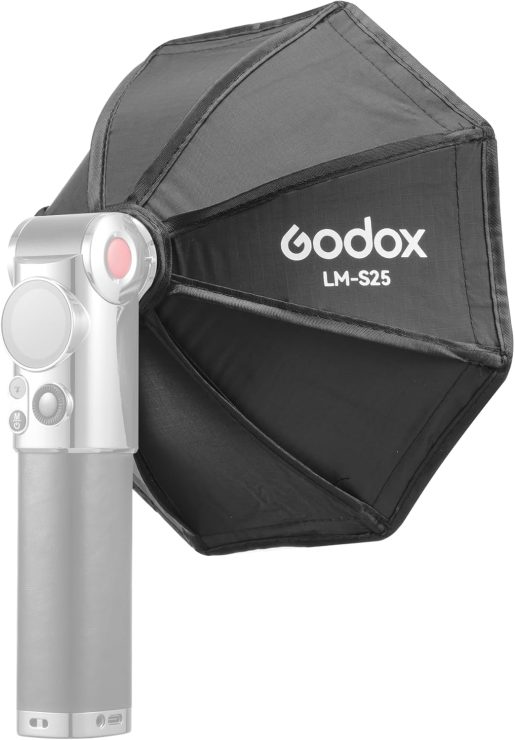
Controlling the Lux Master is easy and straightforward. The few buttons and quality touchscreen work well and logically. Remote control via a trigger is identical to any other Godox flash.
Hand-holding the flash is the simplest and, in many cases, the most fun way to use it. There’s a clear novelty factor, and the look of the flash incites curiosity and interest in subjects, putting them at ease. This is particularly useful for candids. The strong shadows created by direct illumination with the fan reflector are distinctive, a kind of signature look of the flash.
Other Options
There is no direct equivalent to the Lux Master from any manufacturer. There is, of course, a multitude of speedlights on the market, but none offering the same form factor, illumination type, power and price ($249 USD at the time of writing).
One alternative is the AD200Pro II, which ships with a bare-bulb head. It can be handheld but that’s really not how it is intended to be used. It is bigger, heavier, more expensive at $349 and more powerful.
Another imperfect comparison is the AD100Pro, which also has a cylindrical form factor but is shorter and wider, as well as being more powerful. It doesn’t offer a bare-bulb option, has a removable battery and is not as enjoyable to hold in hand, but costs $269.
A last comparison point is the Godox V1. It has a circular front element like the AD100Pro, not a bare-bulb. Its output power is comparable to that of the Lux Master, mounts on a hotshoe, and costs $229.
Conclusion
With the Lux Master, Godox proposes a flash which appears, on first look, to be only a tribute to people who enjoy retro or vintage looks. Looking beyond its unique aesthetics, the Lux Master is actually a modern and capable flash, with TTL, a good power level, a built-in battery, a touchscreen, a bare-bulb configuration and more. It’s not for everyone and isn’t without its quirks, but for many use cases, it’s worthy of consideration and might well be the best best balance of price, size and features.

